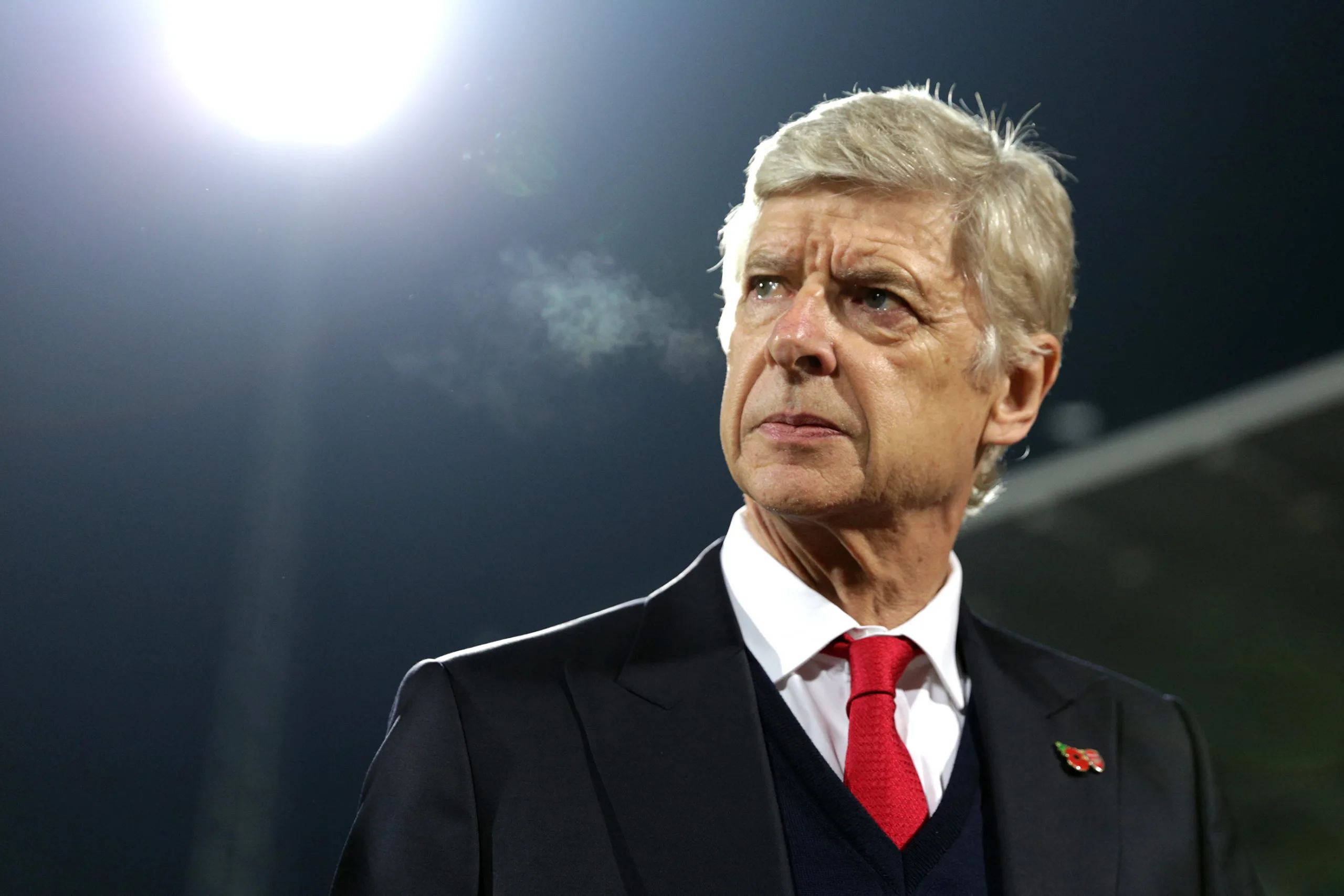We need to talk about the Arsene Wenger coat.
Arsene Wenger is one of the most successful football managers of all time. His 2003-04 Arsenal ‘Invincibles’ team will be talked about for decades to come. And so, apparently, will his coat.
Most managers opt for a comfy tracksuit in winter, usually accompanied by a hat and gloves. But not Wenger.
The Frenchman went to extreme lengths to keep warm in those chilly months by donning an oversized puffer jacket that ran all the way down to his shins.
Wenger often struggled to zip up the enormous coat, giving photographers and TV camera crews a weekly opportunity to capture the legendary boss in a moment of touchline terror.
Naturally, fans couldn’t get enough of the trendy clobber. So much so that a new Arsene Wenger coat meme was created pretty much every week during his last few years at the Emirates.
Several years on from his Arsenal exit, the time has come for First Print Football to conduct a thorough analysis of the 2010s phenomenon that was Arsene Wenger’s coat.
First of all, let’s get the basics out the way…
Why did Arsene Wenger wear a massive coat?
England is cold in the winter. It’s as simple as that.
In 2018, Wenger elaborated on his coat calamities during a beIN SPORTS interview with Richard Keys.
Asked whether he ever managed to zip his coat up, the three-time Premier League winner jokingly replied, “Yes! In fact, I improved in that.”
- Why Did Sir Alex Ferguson Retire?
- Why Did Ruud Van Nistelrooy Leave Man Utd? Exit Explained
- Why Did Jose Mourinho Leave Chelsea in 2007? Exit Explained
Wenger became aware of the scrutiny he was under every time he wore his shin-hugging garment in front of the cameras.
“Yes, I was conscious of that because they are too long, and sometimes the zip didn’t work,” he said. “I struggled a lot with that. But, in the end, because people were showing it, I was conscious that I was under scrutiny!”
Arsene Wenger thought the coat was “ridiculous”
We let you #AskArsene anything you wanted!@ericbongoe wanted to know about his zip problem!#beINWenger pic.twitter.com/ULzcbIAiA1
— beIN SPORTS (@beINSPORTS_EN) October 6, 2019
In another beIN SPORTS interview in 2019, Wenger explained why the zipper caused so many problems.
“Because the coat was too long, and in winter when it flexes it doesn’t do well,” he said. “It always blocked. It became ridiculous, but it was always like that. I had cold hands as well sometimes in winter, and my technique must not have been great because, basically, you have your attention somewhere else. You look at every second on the field… catches your attention.”
Wenger’s coat changed over the years, most notably in 2014 when Puma replaced Nike as Arsenal’s kit manufacturer.
The same issue persisted, though, and Wenger continued to have trouble with his coat up until his Arsenal departure in 2018.
How Puma tried to solve Arsene Wenger’s jacket problem
Arsene Wenger clearly has a great sense of humour.
When Puma took over from Nike, the German sportswear company called upon the then-Arsenal manager to take part in an advert.
The 60-second ad began with the narrator explaining how players and managers have to prepare for different variables in football, from tough opponents to bad weather.
The video then focused on one particular challenge that people in football can face: the zipper.
Puma claimed to have studied Wenger’s hands and the pace of his zipping to create the perfect coat. “We think we nailed it,” the narrator said, prompting the Gunners icon to smile and excitedly say, “I think so too!”
You can watch the hidden gem advert in the video above. Trust me, it’s well worth a watch!
How much is an Arsene Wenger coat worth?
Prepare to be blown away.
In August 2022, BT Sport show Glory Hunters valued various pieces of merchandise from famous names in the football world.
Adam Gascoigne, CEO of Graham Budd Auctions, estimated that a signed version of Arsene Wenger’s coat would fetch anywhere between £500-£1,000 at an auction.
That number is absolutely staggering when you consider that some legendary players’ match-worn shirts can be bought for less money!
Fashionable footballers
Arsene Wenger is not the only high-profile football name to be associated with a particular type of clothing.
Here are a few other examples of times when football fashion statements became the talk of the terraces:
Gabor Kiraly’s tracksuit bottoms
You know you’re a football fashion icon when you have an entire Wikipedia section dedicated to your choice of clothing. Gabor Kiraly won 108 caps for Hungary, but the former Crystal Palace goalkeeper is probably best known to English fans for the grey tracksuit bottoms he wore instead of regular shorts.
Roberto Mancini’s scarf
Roberto Mancini became an instant fan favourite after replacing Mark Hughes as Manchester City manager in December 2009. He famously wore a blue and white scarf (pictured below) on the touchline during games.
Liverpool’s white suits
The 1996 FA Cup final is remembered for two things: Eric Cantona’s goal and Liverpool’s outlandish pre-match attire. The Spice Boys rocked up to Wembley dressed in cream-coloured Emporio Armani suits and white Gucci shoes. Manchester United, who ran out 1-0 winners that day, kept it simple pre-match with traditional navy colours.
The snood (Carlos Tevez and Samir Nasri, among others)
Snoods were designed to keep players’ necks warm in the same way gloves are worn to keep hands warm. However, the science behind the fashionable neckwarmers just didn’t fly among those who take a no-nonsense, roll-your-sleeves-up approach to the beautiful game. In 2011, the International FA Board (IFAB) banned players from wearing snoods.
Scott Parker’s stripes
The football world couldn’t stop talking about Scott Parker’s stripes during his stint as Bournemouth manager. The former England midfielder wore a Thom Browne-designed blazer while watching his players from the sidelines. The grey jacket, which costs £1,650, stood out due the bizarre placement of four white stripes on the left sleeve.

